Apps
Auto Added by WPeMatico
Auto Added by WPeMatico
Mark Zuckerberg’s Facebook messages were retracted from the inboxes of some users, six sources told TechCrunch in April. Facebook quickly tried to normalize that breach of trust by claiming it would in the coming months give everyone the ability to unsend messages. We haven’t heard a word about it since, and Facebook told me it had nothing more to share here today.
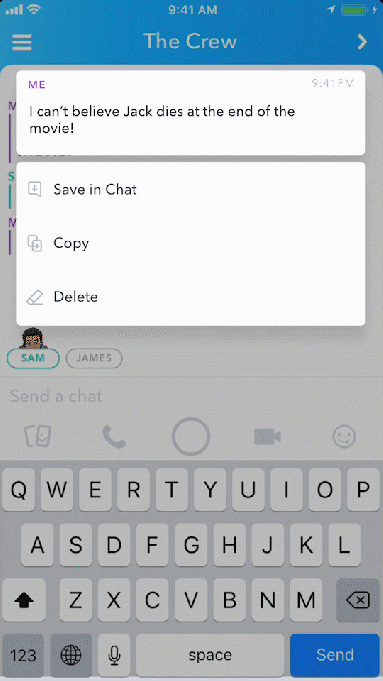 Well Snap is stepping up. Snapchat will let you retract your risqué, embarrassing or incriminating messages thanks to a new feature called Clear Chats that’s rolling out globally over the next few weeks.
Well Snap is stepping up. Snapchat will let you retract your risqué, embarrassing or incriminating messages thanks to a new feature called Clear Chats that’s rolling out globally over the next few weeks.
Hold down on a text, image, video, memory, sticker or audio note in a one-on-one or group chat Snapchat message thread and you’ll see a Delete button. Tap it, and Snapchat will try to retract the message, though it admits it won’t always work if the recipient lacks an internet connection or updated version of the app. The recipient will also be notified… something Facebook didn’t do in the case of Zuckerberg’s messages.
The Clear Chats feature could make people more comfortable sending sensitive information over Snapchat. The app already auto-deletes messages after they’re viewed, unless a recipient chooses to screenshot or Save them, which their conversation partner can see. This could be especially useful for thwarting cases of revenge porn, where hackers or jilted ex-lovers expose someone’s nude images.
Unfortunately, the Clear Chats option could also be used to send then retract abusive messages, destroying the paper trail. Social media evidence is increasingly being used in divorce and custody battles, which an unsend feature might undermine… especially if Facebook goes through with rolling it out on its platform where messages are normally permanent. But right now, Snapchat’s priority is doing whatever it can to boost usage after hitting its slowest growth rate ever last quarter. If teens feel like Snapchat is a consequence-free place to message, whether or not that’s true, they might favor it over SMS and other social apps.
Snap made a few other announcements today. Spectacles v2, which are actually pretty great and I continue to use, are now available for purchase through Amazon in the U.S., U.K and Canada. The $150 photo- and video-recording sunglasses come to more European countries via Jeff Bezos soon, such as France, Germany, Italy and Spain. Amazon will sell Spectacles in three color combos: Onyx Moonlight, Sapphire Twilight and Ruby Daybreak.
Until now, you could only buy v2 on Snap’s website. That’s because Snapchat’s eagerness to develop a bevy of sales channels made it very tough to forecast demand for its lackluster v1 Spectacles. They only sold 220,000. That led to hundreds of thousands of pairs gathering dust unsold in warehouses, and Snapchat taking an embarrassing $40 million write-off.
“We had an inventory challenge with v1,” Snap’s VP of hardware Mike Randall told me in April. “We don’t think it was a product issue. It was an internal understanding our demand issue versus a planning issue. So we think by having a more simplistic channel strategy with v2 we can more thoughtfully manage demand with v2 versus v1.” Working with Amazon and its robust toolset should help Snap get Spectacles in front of more buyers without obscuring how many it should be manufacturing.
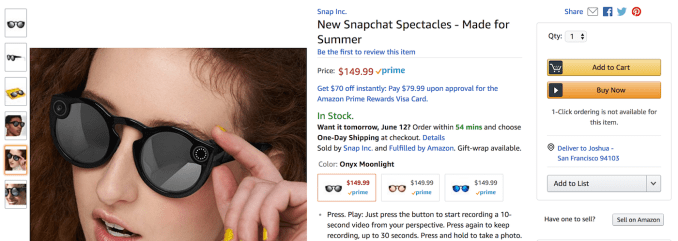
Still, the worst thing about Spectacles is Snapchat. The inability to dump footage directly to your phone’s camera roll, and the incompatibility of its round media format with other social networks, means it’s tough to share your Spectacles content anywhere else while making it look good. Snap has experimented with a traditional landscape export format, but that hasn’t rolled out. Spectacles could strongly benefit from Snap partnering with fellow apps or open sourcing to let others show its circular always-full-screen format in all its glory.
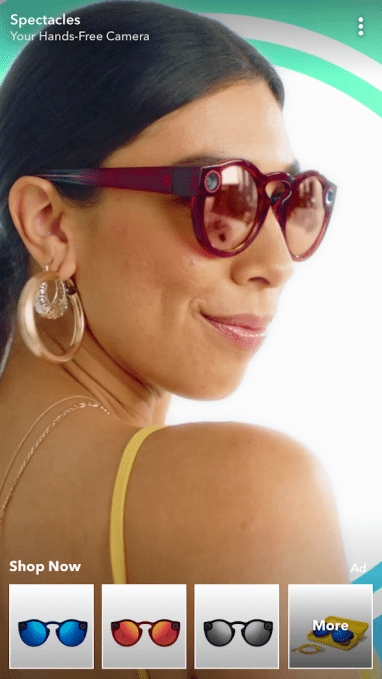 Finally, Snapchat is launching a new e-commerce ad unit that shows a carousel of purchaseable items at the bottom of the screen that users can tap to buy without leaving the Snapchat app. This follows our prediction that Snap launching its own in-app merch store was really the foundation of a bigger e-commerce platform that’s now rolling out.
Finally, Snapchat is launching a new e-commerce ad unit that shows a carousel of purchaseable items at the bottom of the screen that users can tap to buy without leaving the Snapchat app. This follows our prediction that Snap launching its own in-app merch store was really the foundation of a bigger e-commerce platform that’s now rolling out.
Merchants can use the Snap Pixel to measure how their ads lead to sales. The ability to shave down the e-commerce conversion funnel could get advertisers spending more on Snapchat when it could use the dollars. Last quarter it lost $385 million and missed its revenue target by $14 million.
Snapchat is also bringing its augmented reality advertisements to its self-serve ad-buying tool. They’re sold on an effective CPM basis for $8 to $20 depending on targeting. Snapchat is also turning its new multiplayer game filters, called Snappables, into ads.
Overall, it’s good to see Snapchat iterating across its software, hardware and business units. Plagued by executive departures, fierce competition from Facebook, a rough recent earnings report and share price troubles, it’s easy to imagine the team getting distracted. The long-term roadmap is fuzzy. With Stories becoming more popular elsewhere, Spectacles sales not being enough to right the ship and Instagram preparing to launch a long-form video hub that competes with Snapchat Discover, Snap needs to figure out its identity. Perhaps that will hinge on some flashy new feature that captures the imagination of the youth. That could be its upcoming Snapkit platform that will let users log into other apps using their Snapchat credentials, bring their Bitmoji, and even use Snap’s AR-equipped software camera within other apps.
But otherwise, it must lock in for a long-haul of efficient and methodical improvement. If it’s not growing, the best it can do is hold on to its core audience and squeeze as many dollars out of them as possible without looking desperate.
Powered by WPeMatico
Last week TechCrunch reported Instagram will launch a long-form video hub, with a tentative June 20th launch date. Now Instagram is asking reporters to RSVP for a June 20th “special event,” confirming our scoop’s date. The invitation simply reads “Instagram has some news to share, and we want you to be the first to hear about it.” This is Instagram’s chance to evolve from social media to just ‘media,’ stealing longer mobile viewing sessions away from YouTube and Snapchat Discover.
Here are the details of the long-form video hub that we’ve heard from our sources:
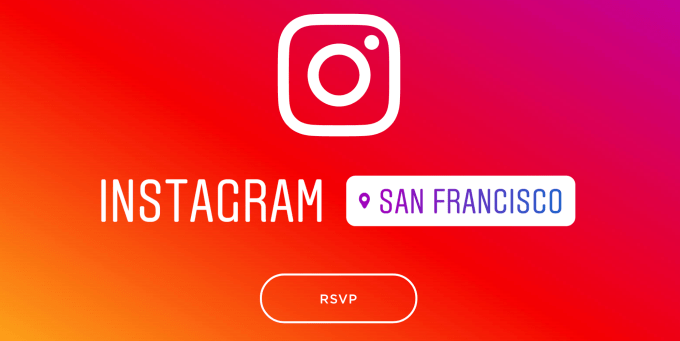
It’s also quite possible that Instagram will announce that it has hit 1 billion users, which would be a great way to draw content creators. Instagram hit 600 million in December 2016, 700 million in April 2017 and 800 million in September 2017. If it’s adding 100 million users every four months or so, that means it should have reached 1 billion by the June 20th event.
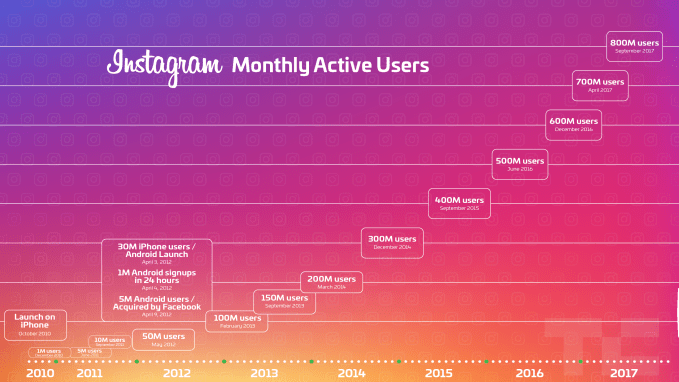
Instagram has the opportunity to settle into a sweet spot between YouTube and Snapchat Discover. YouTube offers incredible breadth of content, but it’s so packed with amateurish videos that it can be tough to find the gems. With algorithmic, personalized curation and a narrower set of sources, Instagram could raise the likelihood that you’ll like what you’re shown. That could encourage users to fill a 7-minute Uber ride or 30-minute commute with Instagram’s long-form video rather than aimlessly wandering the web.
Snapchat has focused on heavy-handed curation for Discover, only working with chosen partners. But that means it can be tough to find something to watch that really resonates. The recent redesign drowns polished Discover video in rivers of friends’ Stories and semi-pro creators. And Snapchat has just 191 million daily users compared to the 500 million-plus Instagram has. That reach could lure in creators who want to build their brand and audience, as well as earn money from their content.
This is all what Facebook was hoping to do with Facebook Watch, but that original video hub was filled with third-rate reality shows and documentaries that haven’t piqued the interest of the younger crowd. Facebook is a ubiquitous utility, but it’s certainly not cool any more. It’s NBC. Here, Instagram has a chance to be the second coming of MTV.
Check back on June 20th at 9am Pacific for our coverage of the Instagram event, and read our full scoop on what’s coming here:
Powered by WPeMatico
San Jose-based Cohesity has closed an oversubscribed $250M Series D funding round led by SoftBank’s Vision Fund, bringing its total raised to date to $410M. The enterprise software company offers a hyperconverged data platform for storing and managing all the secondary data created outside of production apps.
In a press release today it notes this is only the second time SoftBank’s gigantic Vision Fund has invested in an enterprise software company. The fund, which is almost $100BN in size — without factoring in all the planned sequels, also led an investment in enterprise messaging company Slack back in September 2017 (also a $250M round).
“Cohesity pioneered hyperconverged secondary storage as a first stepping stone on the path to a much larger transformation of enterprise infrastructure spanning public and private clouds. We believe that Cohesity’s web-scale Google-like approach, cloud-native architecture, and incredible simplicity is changing the business of IT in a fundamental way,” said Deep Nishar, senior managing partner at SoftBank Investment Advisers, in a supporting statement.
Also participating in the financing are Cohesity’s existing strategic investors Cisco Investments, Hewlett Packard Enterprise (HPE), and Morgan Stanley Expansion Capital, along with early investor Sequoia Capital and others.
The company says the investment will be put towards “large-scale global expansion” by selling more enterprises on the claimed cost and operational savings from consolidating multiple separate point solutions onto its hyperconverged platform. On the customer acquisition front it flags up support from its strategic investors, Cisco and HPE, to help it reach more enterprises.
Cohesity says it’s onboarded more than 200 new enterprise customers in the last two quarters — including Air Bud Entertainment, AutoNation, BC Oil and Gas Commission, Bungie, Harris Teeter, Hyatt, Kelly Services, LendingClub, Piedmont Healthcare, Schneider Electric, the San Francisco Giants, TCF Bank, the U.S. Department of Energy, the U.S. Air Force, and WestLotto — and says annual revenues grew 600% between 2016 and 2017.
In another supporting statement, CEO and founder Mohit Aron, added: “My vision has always been to provide enterprises with cloud-like simplicity for their many fragmented applications and data — backup, test and development, analytics, and more.
“Cohesity has built significant momentum and market share during the last 12 months and we are just getting started.”
Powered by WPeMatico
“‘You Are Now Connected On Messenger’ Is The Worst Thing On Facebook” BuzzFeed’s Katie Notopoulos correctly pointed out in a story yesterday. When you friend someone on Facebook or Messenger, or an old friend joins Messenger, you often get one of these annoying notifications. They fool you into thinking someone actually wants to chat with you while burying your real message threads.
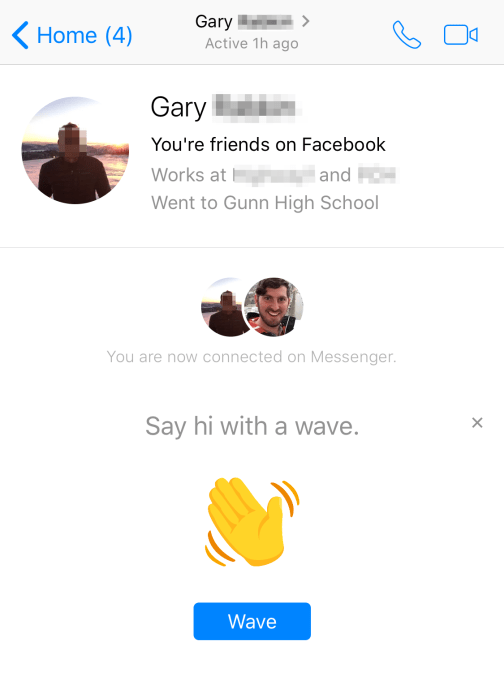
Luckily, it turns out Facebook was already feeling guilty about this shameless growth hack. When I asked why, amidst its big push around Time Well Spent, it was sending these alerts, the company told me it’s already in the process of scaling them back.
A Facebook spokesperson gave TechCrunch this statement:
We’ve found that many people have appreciated getting a notification when a friend joins Messenger. That said, we are working to make these notifications even more useful by employing machine learning to send fewer of them over time to people who enjoy getting them less. We appreciate all and any feedback that people send our way, so please keep it coming because it helps us make the product better.
So basically, if Messenger notices you never open those spammy alerts to start a chat thread, it will skip sending some of them.
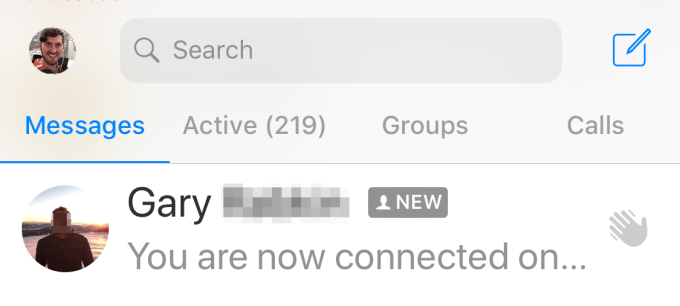
Personally, I think these alerts should only be sent when users connect on Messenger specifically, which you can do with non-friends outside of Facebook. The company forced everyone to switch from Facebook Chat to Messenger years ago, but some people are only now relenting and actually downloading the app. I don’t think that should ever generate these alerts, since they have nothing to do with your own actions. Similarly, if I confirm a Facebook friend request from someone else, I know I’m now connected on Messenger too, so no need to pester me with a notification.
But for now, if you hate these alerts, be sure not to open them so you send a signal to Facebook that you don’t want more.
Facebook does all sorts of this annoying growth hacking, like notifications about friends adding to their Story, “X, Y, and 86 other friends responded to events near you tomorrow,” and all the emails it sends if you stop visiting. If we can properly shame tech giants for the specifics of their most intrusive and distracting behavior, rather than just griping more vaguely about overuse, we may be able to make swifter progress toward them respecting our attention.
Powered by WPeMatico
Panda has built the next silly social feature Snapchat and Instagram will want to steal. Today the startup launches its video messaging app that fills the screen with augmented reality effects based on the words you speak. Say “Want to get pizza?” and a 3D pizza slice hovers by your mouth. Say “I wear my sunglasses at night” and suddenly you’re wearing AR shades with a moon hung above your head. Instead of being distracted by having to pick effects out of a menu, they appear in real-time as you chat.
Panda is surprising and delightful. It’s also a bit janky, created by a five person team with under $1 million in funding. Building a video chat app user base from scratch amidst all the competition will be a struggle. But even if Panda isn’t the app to popularize the idea, it’s invented a smart way to enhance visual communication that blends into our natural behavior.
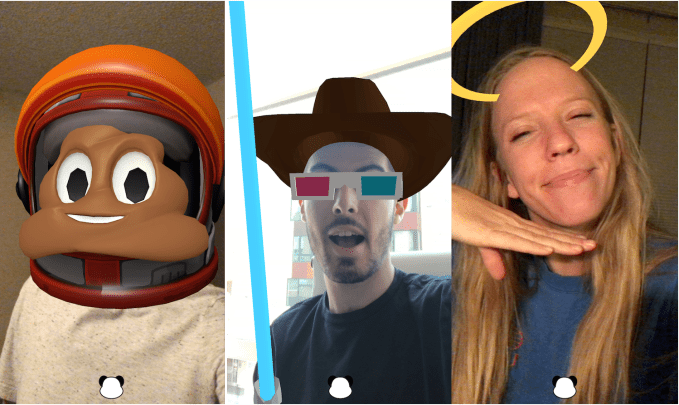
It all started with a trippy vision. Panda’s 18-year-old founder Daniel Singer had built a few failed apps and was working as a product manager at peer-to-peer therapy startup Sensay in LA. When Alaska Airlines bought Virgin, Singer scored a free flight and came to see his buddy Arjun Sethi, an investor at Social Capital in SF. That’s when suddenly “I’m hallucinating that as I’m talking the things I’m saying should appear” he tells me. Sethi dug the idea and agreed to fund a project to build it.

Panda founder Daniel Singer
Meanwhile, Singer had spent the last 6 years FaceTiming almost every day. He loved telling stories with his closest friends, yet Apple’s video chat protocol had fallen behind Snapchat and Instagram when it came to creative tools. So a year ago he raised $850,000 from Social Capital and Shrug Capital plus angels like Cyan (Banister) and Secret’s David Byttow. Singer set out to build Panda to combine FaceTime’s live chat with Snapchat’s visual flare triggered by voice.
But it turns out, “video chat is hard” he admits. So his small team settled for letting users send 10-second-max asynchronous video messages. Panda’s iOS app launched today with about 200 different voice activated stickers from footballs to sleepy Zzzzzs to a “&’%!#” censorship bar that covers your mouth when you swear. Tap them and they disappear, and soon you’ll be able to reposition them. As you trigger the effects for the first time, they go into a trophy case that gamifies voice experimentation.
Panda is fun to play around with yourself even if you aren’t actively messaging friends, which is reminiscent of how teens play with Snapchat face filters without always posting the results. The speech recognition effects will make a lot more sense if Panda can eventually succeed at solving the live video chat tech challenge. One day Singer imagines Panda making money by selling cosmetic effects that make you more attractive or fashionable, or offering sponsored effects so when you say “gym”, the headband that appears on you is Nike branded.
Unfortunately, the app can be a bit buggy and effects don’t always trigger, fooling you that you aren’t saying the right words. And it could be tough convincing buddies to download another messaging app, let alone turn it into a regular habit. Apple is also adding a slew of Memoji personalized avatars and other effects to FaceTime in its upcoming iOS 12.
Panda does advance one of technology’s fundamental pursuits: taking the fuzzy ideas in your head and translating them into meaning for others in clearer ways than just words can offer. It’s the next wave of visual communication that doesn’t require you to break from the conversation.
When I ask why other apps couldn’t just copy the speech stickers, Singer insisted “This has to be voice native.” I firmly disagree, and can easily imagine his whole app becoming just a single filter in Snapchat and Instagram Stories. He eventually acquiesced that “It’s a new reality that bits and pieces of consumer technology get traded around. I wouldn’t be surprised if others think it’s a good idea.”
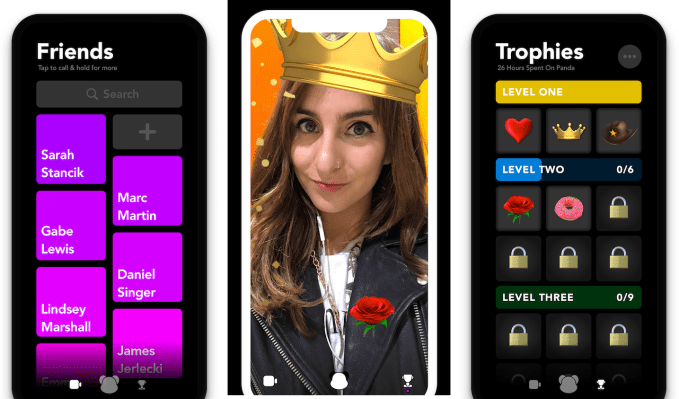
It’s an uphill battle trying to disrupt today’s social giants, who are quick to seize on any idea that gives them an edge. Facebook rationalizes stealing other apps’ features by prioritizing whatever will engage its billions of users over the pride of its designers. Startups like Panda are effectively becoming outsourced R&D departments.
Still, Panda pledges to forge on (though it might be wise to take a buyout offer). Singer gets that his app won’t cure cancer or “make the world a better place” as HBO’s Silicon Valley has lampooned. “We’re going to make really fun stuff and make them laugh and smile and experience human emotion” he concludes. “At the end of the day, I don’t think there’s anything wrong with building entertainment and delight.”
Powered by WPeMatico
You can now buy game and concert tickets from teams and musicians within Snapchat, thanks to an integration with SeatGeek .
While Snapchat has started testing e-commerce features in the past few months, SeatGeek says this is the first ticket-buying experience built into the Snapchat app.
The Los Angeles Football Club was the first team to sell tickets through this integration, by posting a Snapchat Story (and a Snapcode on the team website) that allowed users to swipe up to buy tickets to the May 26 game. The full purchase experience takes place without leaving the app.
“We’re always looking to reach our fans in innovative ways, and selling tickets directly to our followers on Snapchat gives us an incredible opportunity to connect with our most dedicated supporters,” said Los Angeles Football Club President and co-owner Tom Penn in the announcement.
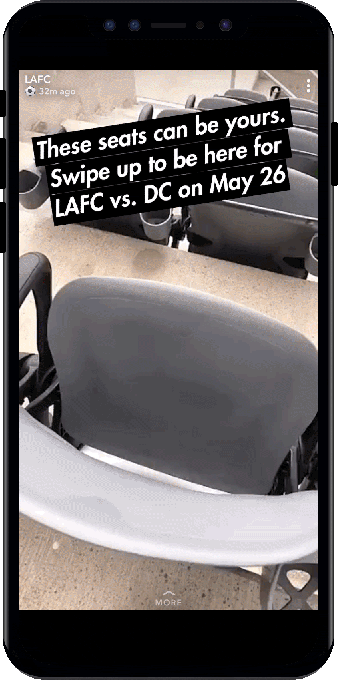
SeatGeek co-founder Russ D’Souza said that as “the pipe gets solidified,” you’ll start seeing more Snapchat/SeatGeek ticket sales. He added that this is the kind of integration he was hoping for when the company launched the SeatGeek Open platform a couple of years ago, allowing teams, musicians and other rightsholders to sell tickets directly through SeatGeek. (The platform also supports ticket sales through Facebook.)
“For too long, the legacy ticketing approach has been to make it difficult for teams to sell tickets in lots of places,” D’Souza said. “Teams should want to sell their tickets in as many places as possible.”
And it sounds there are additional deals in the works: “What we’re excited about over the next few months is beating the drumbeat of openness with new partnerships … We want to drive the whole industry forward and create more tangible results that cause the industry to open up.”
Powered by WPeMatico
Fintech startup Revolut likes to announce new things all the time. Even though nothing is going live today, it’s interesting to see where the startup is heading. The company is working on a trading platform for traditional shares without any commission.
You’ll find stock from public companies from the U.K. and the U.S., as well as various ETFs and options. In other words, Revolut is going to become the Robinhood of Europe.
While American customers have been using Robinhood for years, the rest of the world has been lagging behind when it comes to stock trading.
You still have to open an account on a painfully slow website and pay a few euros for every transaction. Some companies even ask you to send a letter to create an account. And if you want to buy stock through your existing bank account, it usually costs even more.
Revolut promises that you won’t pay any commission when you buy or sell shares. The company plans to make money on margin trading, securities lending and interest on cash. Unfortunately, Revolut didn’t say when the feature would launch.
Premium subscribers will be able to test the feature first. Eventually, you’ll also get additional perks if you’re a premium subscriber. Trading will be available to all Revolut users in Europe and future markets. The company plans to launch in the U.S., Canada, Singapore, Hong Kong, Australia and New Zealand in the coming months.
Revolut’s premium subscription is becoming a sort of Amazon Prime for financial products. You pay £6.99/€7.99 per month and you get unlimited foreign exchange transactions, travel insurance, access to new features and more.
It’s clear that Revolut plans on making predictable revenue on this premium subscription. And maybe the trading platform will make more people subscribe to Revolut Premium.
Additionally, Revolut now officially has 2 million users. It’s funny to see that Revolut is announcing this new milestone just days after N26 announced a million users. Interestingly, Revolut has 900,000 users in the U.K., where N26 has yet to launch.
Powered by WPeMatico
Instagram is preparing to unveil a home for longer-form video — a YouTube competitor and its take on Snapchat Discover. According to multiple sources, Instagram will offer a dedicated space featuring scripted shows, music videos and more in vertically oriented, full-screen, high-def 4K resolution. Instagram has been meeting with popular social media stars and content publishers to find out how their video channels elsewhere would work within its app. It’s also lining up launch partners for an announcement of the long-form video effort tentatively scheduled for June 20th.
The public shouldn’t expect Netflix Originals or HBO-level quality. This is not “InstaGame of Thrones.” Instead, the feature is more focused on the kind of videos you see from YouTube creators. These often range from five to 15 minutes in length, shot with nice cameras and lighting but not some massive Hollywood movie production crew. Average users will be able to upload longer videos too, beyond the current 60-second limit.
Instagram intends to eventually let creators and publishers earn money off the longer videos, though it hasn’t finalized how accompanying ads like pre-rolls and mid-breaks or revenue splits would work. It is not paying creators up-front for shows like Facebook Watch, either. But the videos will each feature a swipe-up option to open a link, which creators can use to drive traffic to their websites, e-commerce stores or event ticketing. Thanks to Instagram’s 800 million-plus users, the video section could be a powerful marketing tool beyond generating cash for creators directly.
The long-form video section will spotlight a collection of popular videos, and provide a “continue watching” option since users might view long clips over the course of several sessions. Users will also see the long-form clips featured on authors’ profiles near the Stories Highlights bubbles. Creators won’t be able to shoot and post long-form videos, as the section will only allow pre-made video uploads.
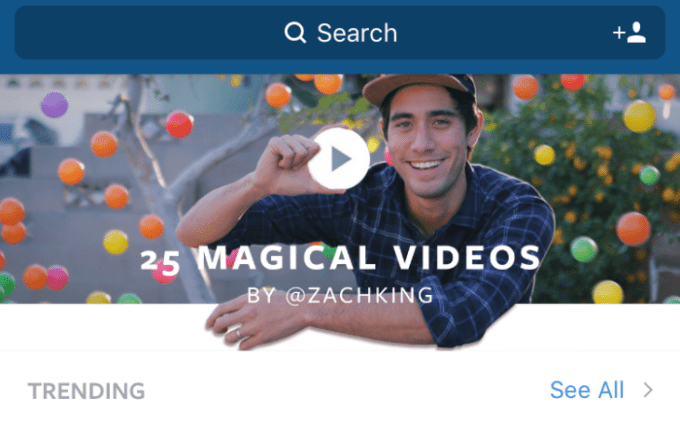
Instagram has previously offered Spotlight Collections that assemble multiple videos into a non-stop viewing experience
This new information from TechCrunch’s sources comes after a brief initial report by The Wall Street Journal yesterday that Instagram was talking to content publishers about a vertical video feature. The WSJ’s article focused on the ability for average users to post up to hour-long clips, but the real story here is Instagram launching a professionally produced video entertainment hub. Instagram declined our request for comment.
It’s unclear what the new video feature will be named, or where it will appear. It could possibly live in the Explore tab, get its own tab or even be spun out into a separate app. Our sources didn’t know how the videos would work with the main Instagram feed, where they could appear full-length or show up as previews to alert a publisher’s fans to their newest long-form clip. The announcement date or feature details could still potentially change.
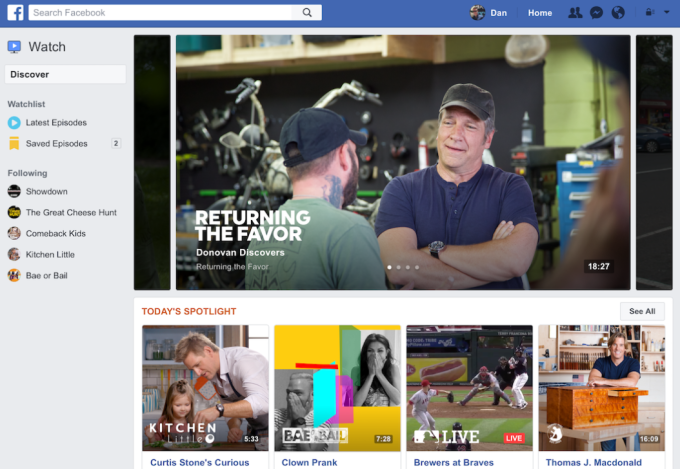
Facebook’s Watch section of long-form video hasn’t proven popular
Facebook hasn’t had much luck with its own original long-form video section it launched in August 2017, Facebook Watch. Mediocre, unscripted reality shows and documentary clips haven’t proven a draw for the social network, which is now expanding into scripted programs and news shows. Instagram may prove a more natural home for lean-back entertainment content.
The Instagram long-form video section will be Facebook’s answer to two competing social video destinations it’s yet to successfully clone.
Snapchat’s Discover section offers exclusive, professionally produced vertical video shows from an array of publishers as an alternative to shaky user-generated Stories. But with sagging user growth endangering viewership, backlash to the redesign that buries Discover and a policy shift to stop paying Discover publishers up front, Instagram and its massive user count may be able to seduce publishers to bring longer videos to its app instead.
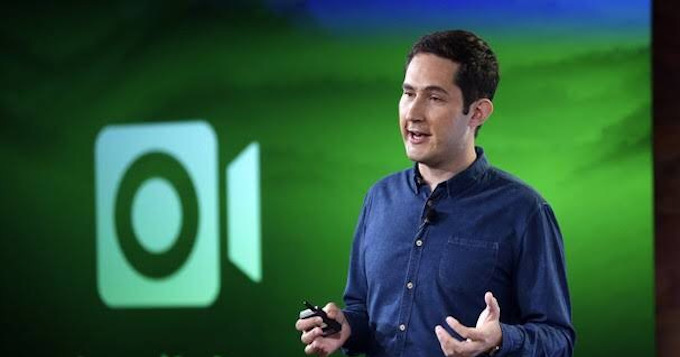
YouTube is the stronger foe. Its ad revenue sharing agreements and massive engagement have made it the go-to platform for video makers. Still, creators are always looking to build their fan bases, earn more money and promote their other online presences. Instagram’s wildfire growth and the familiarity of following people there could make the long-form video section worth embracing.
The feature has big potential as long as it’s not too interruptive of people’s entrenched feed-scrolling and Story-tapping behavior patterns. Instagram will also have to convince creators to shoot their content vertically or find ways to gracefully crop it, and some may be apprehensive if they typically shoot in landscape for traditional video players.
The Facebook family of apps might never be able to match the breadth and depth of YouTube’s video catalog. But Instagram has an opportunity here to skim the best content off the top of the sprawling creator/publisher ecosystem and curate it coherently for casual audiences. That could get us spending more time with Instagram, even if our friends are boring.
Powered by WPeMatico
Designer Ken Wong’s app Florence isn’t exactly a game. Or a comic. It’s a little bit of both — a new experience in storytelling using a mobile device.
The app — or game, if you prefer — comes from the mind of Ken Wong, best known before Florence’s release as Monument Valley’s designer — another app which broke new ground in mobile gaming by creating a visually stunning world that ended up winning the title of Apple’s Game of the Year in 2014, as well an Apple Design Award.
Now Wong has won for his work again on his first venture post-Monument Valley with an Apple Design Award for Florence.

We sat down with the designer on the sidelines of Apple’s Worldwide Developer Conference in San Jose this week to talk about how Florence came to be, and what Wong has planned next.
Wong had left ustwo Games (Monument Valley’s publisher) before its sequel, Monument Valley II, because he wanted to try something new.
“I kind of said what I wanted to. The best thing for Monument Valley would be to have other people take over and expression their vision for it,” he says.
Wong moved back to his home country, Australia, from London, to Melbourne, where there’s a thriving indie gaming scene, to launch his new company Mountains.
The team at Mountains is small — just a programmer, producer and artist in addition to Wong.
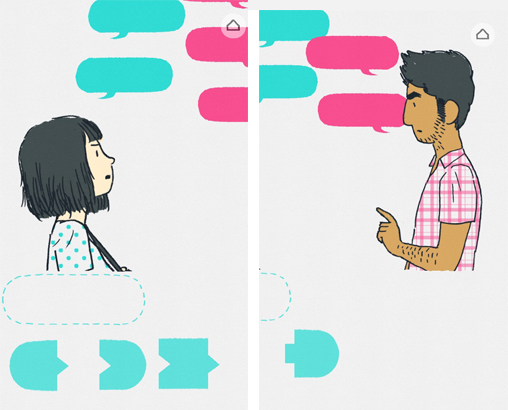
The company partnered with Annapurna, a film studio behind hits like “Her” and “Zero Dark Thirty,” that now runs its own games division. The studio backed Mountains on the Florence project, but also gave the team advice and input along the way.
As part of this arrangement, Annapurna shares in Florence’s revenue. (Florence sells for $2.99.)
Unlike traditional games, you don’t play the “game” Florence with a goal of getting a high score or achieving goals of some kind.
Instead, you tap your way through the interactive story where a young woman, Florence, meets someone, falls in love and has a relationship. You live through it with her, dealing with everything from parental pressure over her single status, to then first dates and moving in together.
Music is a key part of the experience, and helps the game invoke an emotional response.
When the relationship ends, you’ve been invested in this story and characters, and probably will feel sad.
That’s the point, says Wong.
“A lot of people think of games as things you can win — things that involve luck or skill. But…in video games — or, largely, the digital interactive space — there’s so much that you can do,” he says.
“It seems like we’re surrounded by stories of love and romance and relationships…but it felt like that was a blind spot for mobile games. We wanted to tap into that and see how far we could take a romance game on mobile,” Wong explains.
Wong says he was inspired by stories from friends, as well as his own personal experience, when building Florence, as well as movies about relationships like “Eternal Sunshine of the Spotless Mind,” and “500 Days of Summer.”
Like those, Florence is also a portrait of a relationship that’s both light and dark, both joyful and painful.
“It’s my job to provide stimulating material. I just want to move people. And I think moving people in itself can be a goal. What they take out of it is really up to the individual,” he says.
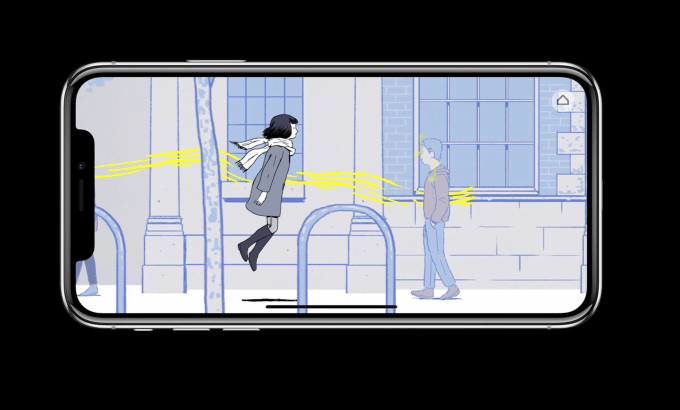
Now that Florence is out there, on both iOS and Android, Wong says he hopes it will inspire other developers to take what the team introduced in terms of the app’s interface design, and use that to tell their own stories.
As for Mountains, however, the team is now considering what stories they want to tell next. They’re not announcing the details of those discussions, but they have some ideas around telling other types of stories that aren’t represented today through mobile gaming.
We might not see those come to life for some time — it took Florence 15 months to go from idea to launch, and the next title will likely take just as long.
But Wong knows what kind of stories they probably won’t do, he says.
“There are so many other studios out there exploring your traditional power fantasies, like combat and fighting and such,” he says.
“I think where we can really contribute is telling stories that are less explored — human experiences that have to do with family or identity. I think that’s who we are.”
Powered by WPeMatico
Twenty months after launching its Craigslist competitor, Marketplace, and relentlessly promoting it with placement in the main navigation bar, Facebook will start earning money off its classifieds section. Facebook today begins testing Marketplace ads in the U.S. that let average users pay to “Boost” their listing to more people through the News Feed. While they’re easy for novices, requiring buyers to only set a budget and how long the ads will run, there are no additional targeting options beyond being shown to age 18+ users in nearby ZIP codes.
Meanwhile, yesterday Facebook announced that it’s launching product ads from businesses that appear within Marketplace. After quietly opening in the U.S. in January and testing in Canada in May, Marketplace ads are now official, and can be bought in those two countries plus New Zealand and Australia. Businesses can extend their existing News Feed, video, Instagram, Messenger and other ad campaigns to Marketplace, and more types of objective-based campaigns will open to the classifieds section soon.
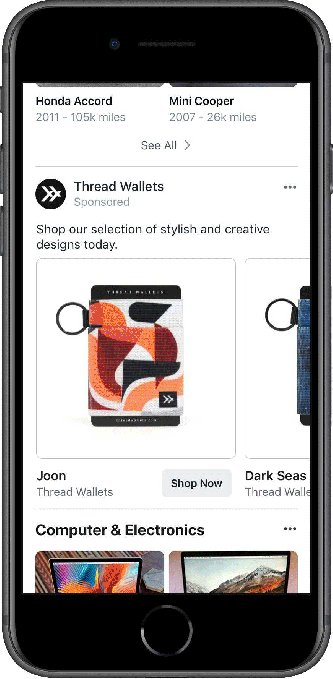
Facebook lets brands show ads within Marketplace
The Boost ads could be a big help if you need to rapidly liquidate your furniture before moving out, or if you’re trying to sell something big at a high price, like Marketplace’s new car, housing, jobs and home services offerings. Yet they seem inefficient, since the lack of targeting means your listing for men’s jewelry might show up to women, or your rock climbing gear ads could show up to senior citizens.
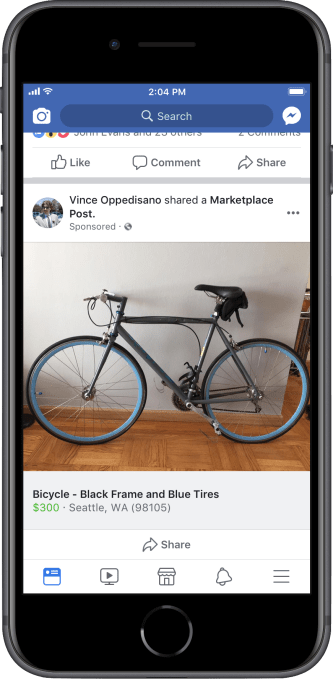
Facebook’s new Boost ads let average users pay to show their Marketplace listings to more people
But Facebook does tell me that ads will be auto-optimized for clicks, so when people start to click your ads, Facebook will show them to people of similar demographics. It will also immediately pause your ad campaign if you mark your item as sold. Boost ads get entered in alongside traditional bids in Facebook’s auction system, which then display what it predicts will be the most appealing ads.
“Many Marketplace sellers have told us that they want the ability to show a listing to more people in their local area, especially if they’re trying to sell it quickly,” Facebook product manager Harshit Agarwal tells TechCrunch. “We’re starting to test a simple way for sellers to boost their listings and help them find a buyer.” For comparison, Craigslist doesn’t run any ads, but charges sellers $5 to $10 for certain product listings for cars and brokered apartments.
One interesting quirk is that Facebook says it won’t allow boosting of listings of political products such as a Bernie Sanders for President t-shirt, as its political advertiser verification and labeling system only works with Pages and not individuals right now.
The Boost ads will only appear to a small percentage of U.S. users and Facebook says it’s too early to know if it will roll them out further. But as the company seems bent on swallowing up every other essential part of the internet, anything that makes Marketplace more useful to sellers and lucrative for the tech giant seems like a good bet for an official launch.
Together, the two formats could unlock new revenue streams for Facebook at a time when it’s starting to run out of ad inventory in the News Feed. The company either needs to open new surfaces like Marketplace to ads, or get people and businesses to pay more to fill its dwindling feed space if it wants to keep Wall Street happy.
Powered by WPeMatico